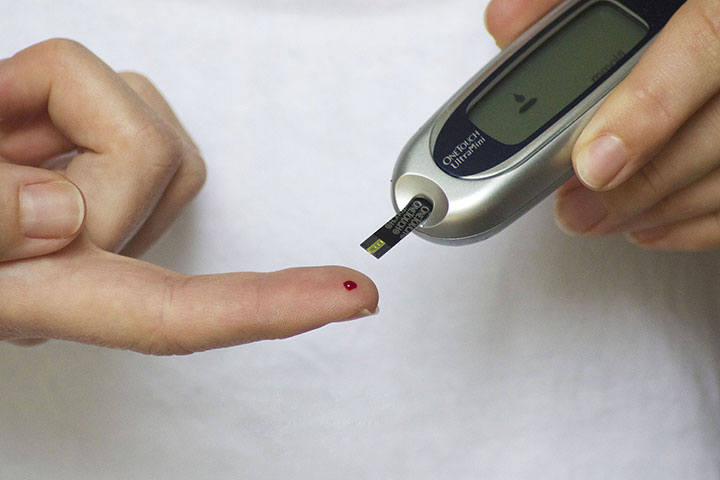On Wednesday, the U.S. Federal Drug Administration approved a device that could make the lives of those diagnosed with diabetes much easier. But when it will be available to Canadians isn’t clear.

READ MORE: Canadian First Nations women face 87% lifetime risk of diabetes, study warns
There are two types of diabetes: type 1 and type 2. In the case of type 1, the pancreas doesn’t produce any insulin to regulate blood sugar. In type 2, either the pancreas doesn’t produce enough or the body can’t utilize what is produced efficiently. Those with diabetes need to carefully regulate their blood sugar and, if they don’t, it could be fatal.
In order to monitor their blood sugar, those with diabetes need to test and then administer the correct dose of insulin. Some don’t inject themselves with syringes, but rather wear an insulin pump that delivers the life-saving medicine into the system continuously. When they eat, they need to give themselves an added dose, called a bolus, to cover off the carbs they consume.
In Canada, these pumps are funded for patients in every province.
For years companies around the world have been developing a system where blood glucose levels are continuously monitored, reducing the highs and lows patients may suffer throughout the day. Dubbed the “artificial pancreas,” this device would further ensure the safety people with diabetes.
On Wednesday, the FDA approved Medtronic’s MiniMed 670G, the first artificial pancreas.
“This device will mean peace of mind, in knowing a person will be in normal blood sugar range a great majority of the time,” said Derek Rapp, chief executive officer of the Juvenile Diabetes Research Foundation (JDRF), which has spent $116 million on research in the artificial pancreas field.
“It is a major news event that a system of this kind has been approved — the first time a pump will administer insulin as a result of information it receives from a sensor,” Rapp said.

This is how it works: a sensor — called the continuous glucose monitor — is placed under the patient’s skin and measures the blood glucose (sugar) levels in the fluid around the cells. A small transmitter then sends the information to a receiver where it determines dosing levels. That then sends the information to the insulin pump which adjusts accordingly.
The system is targeted specifically toward those with type 1 diabetes 4 years and older, but in the future could be used for those with type 2 diabetes.
“I think it’s going to make life with diabetes potentially a whole lot easier for people,” said Dave Prowten, president and CEO of JDRF Canada. “I think anything that makes life easier and has better control for people with diabetes is a double win.”
Prowten said that the fact that a major — and globally recognized body — has approved such a device could move the development of other types of these systems forward allowing people with diabetes to have several options.
WATCH BELOW: What it’s like to live with Type 1 diabetes?

JDRF Canada has participated in many trials of closed-loop systems such as the artificial pancreas. Prowten said that the data gathered there has no doubt helped advance the development of the artificial pancreas.
“I think there are over a dozen systems that are being tested around the world,” he said. “Our goal is that there will be more and more behind this; that this will spur further innovation. We will have more systems and technology coming into the market.”
READ MORE: Reality check—Are long daytime naps a warning sign for Type 2 diabetes?
Several insulin pump makers, including Johnson & Johnson, Tandem Diabetes Care Inc. and Insulet Corp, are teaming up with sensor maker Dexcom Inc. to develop devices like Medtronic’s but are several years behind, according to Jefferies analyst Raj Denhoy.
Les Hazelton, who participated in one 670G trial, explained to the JDRF, “Bottom line: I feel better today and since going into this study, than at any point after I was diagnosed — physically, emotionally, confident in how I’m managing my diabetes. You can get emotional about it. On the good days, if there are enough of them, you recall how you feel — that’s how I feel almost every day now. That’s what it has done to help me.”
Technology has rapidly advanced: it was just 45 years ago that the first blood glucose monitoring began. Now, diabetes patients are able to have an automated system assist them with their everyday lives. Prowten said this rapid advancement of technology is promising.
“This is massive,” Prowten said. “I’m personally very hopeful that opportunities will be available for Canadians in the future.”
Anna Maddison, senior media relations advisor for Health Canada said that, due to regulations, they are unable to disclose companies who have applied for approval of devices. A representative from Medtronic said that they were unable to disclose the information.
—with files from Reuters



Comments